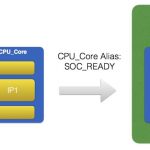The topic of Product Lifecycle Management (PLM) conjures up images of usage on airplanes, tanks and cars. That’s because it was developed decades ago to help make product development and delivery more efficient for big expensive manufactured products. It worked well for its intended markets by combining and managing all the … Read More
Tag: soc
What SOC Size Growth Means for IP Management
Whether or not in the past you believed all the of rhetoric about exploding design complexity in SOC’s, today there can be no debate that SOC size and complexity is well beyond something that can be managed without some kind of design management system. As would be expected, development of most larger designs relies on a data management… Read More
Qualcomm Rounds Out IoT Offerings
Lots of chip companies like ARM Holdings, Intel, NVIDIA and Qualcomm are spending time and effort to find a place for themselves in the IoT market because they, like I, believe in a gigantic, future market. Some companies are focusing on wearables and drones while others are looking to automotive and smart home. Qualcomm previously… Read More
Mentor Extends Verification Offering!
With verification consuming more and more of the design cycle and the increasingly complex industry standard interfaces that are now common place, Verification IP (VIP) is again a trending topic. Back in my IP days the age old question was: Is it better to use VIP from the IP vendor? Because you know it will work, right? Or is it better… Read More
Multi-Level Debugging Made Easy for SoC Development
An SoC can have a collection of multiple blocks and IPs from different sources integrated together along with several other analog and digital components within a native environment. The IPs can be at different levels of abstractions; their RTL descriptions can be in different languages such as Verilog, VHDL, or SystemVerilog.… Read More
HW/SW Interfaces for Portable Stimulus
With growing size and complexity of SoC, the semiconductor community is realizing the growing pain of verification. The cost of SoC verification grows exponentially with design size. Moreover, there is no single methodology for verifying a SoC; multiple engines are used in different contexts through different verification… Read More
The (not so) Easy Life of an SOC Design Integrator
How can large SOC projects effectively integrate sub blocks and IP into a stable version for release or internal development? The person responsible for integrating SOC sub blocks into a validated configuration for release has a difficult task. Usually there are many sub-blocks, each undergoing their own development. There… Read More
Submerging the Data Center
One of NetSpeed’s customers is a Tier-1 semiconductor company that develops some of the industry’s best performing and most complex system on chips (SoC) for the data center and cloud computing markets. To keep its leadership in the data center market, the company needs to produce best-in-class SoC solutions year after year. … Read More
ARM on Moore’s Law at 50: Are we planning for retirement?
On Monday morning on December 7, 2016 Greg Yeric of Arm gave an excellent and wide ranging plenary talk at IEDM entitled “Moore’s Law at 50: Are we planning for retirement?”. You can download Greg’s slide deck here.… Read More
IP Development in Japan
As semiconductor IP is growing bigger in size and more complex in providing complete solution for a particular functionality in an SoC, regions from across the world are joining to provide various types of services in the overall value-chain of IP development, verification, and its integration into SoCs. … Read More







